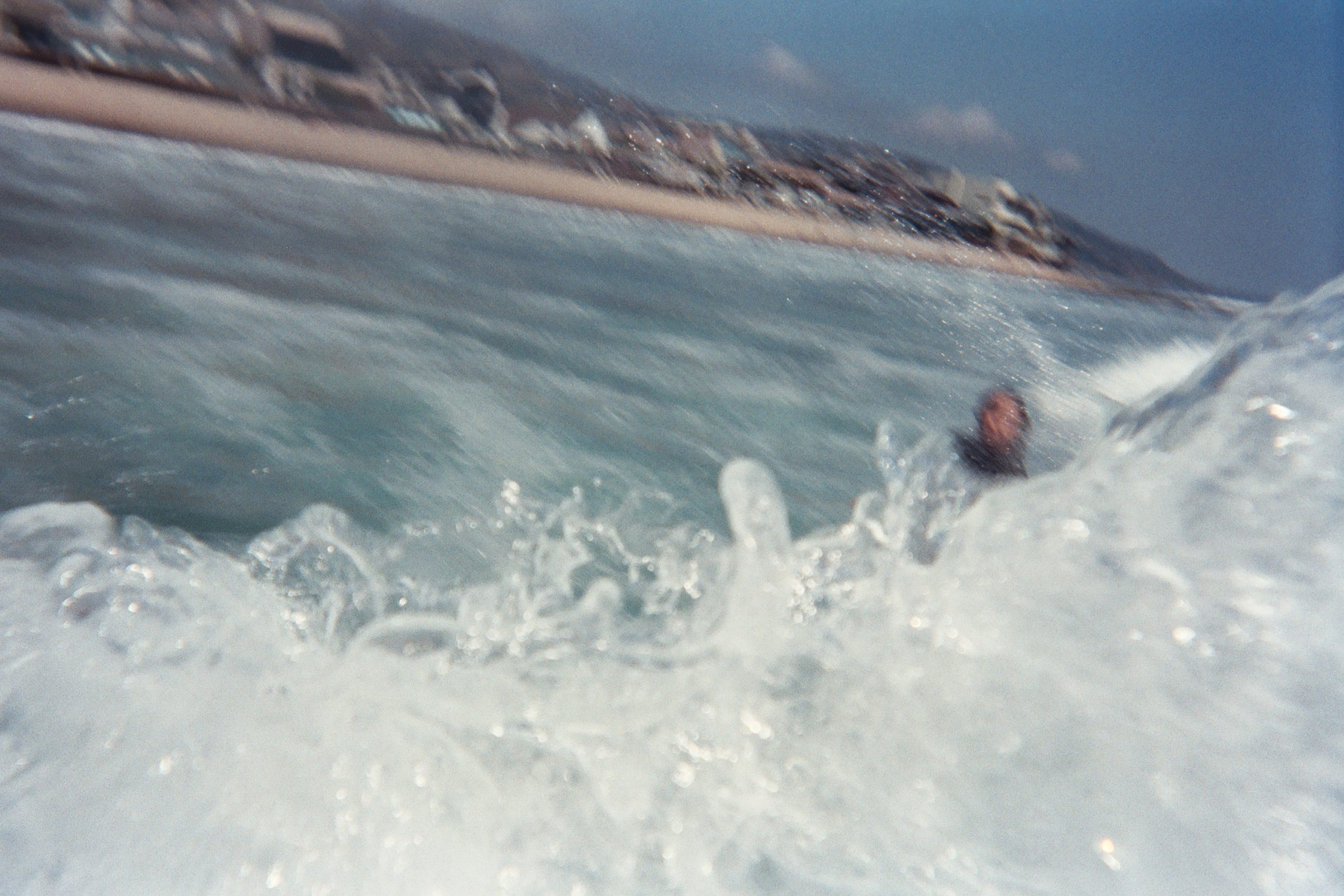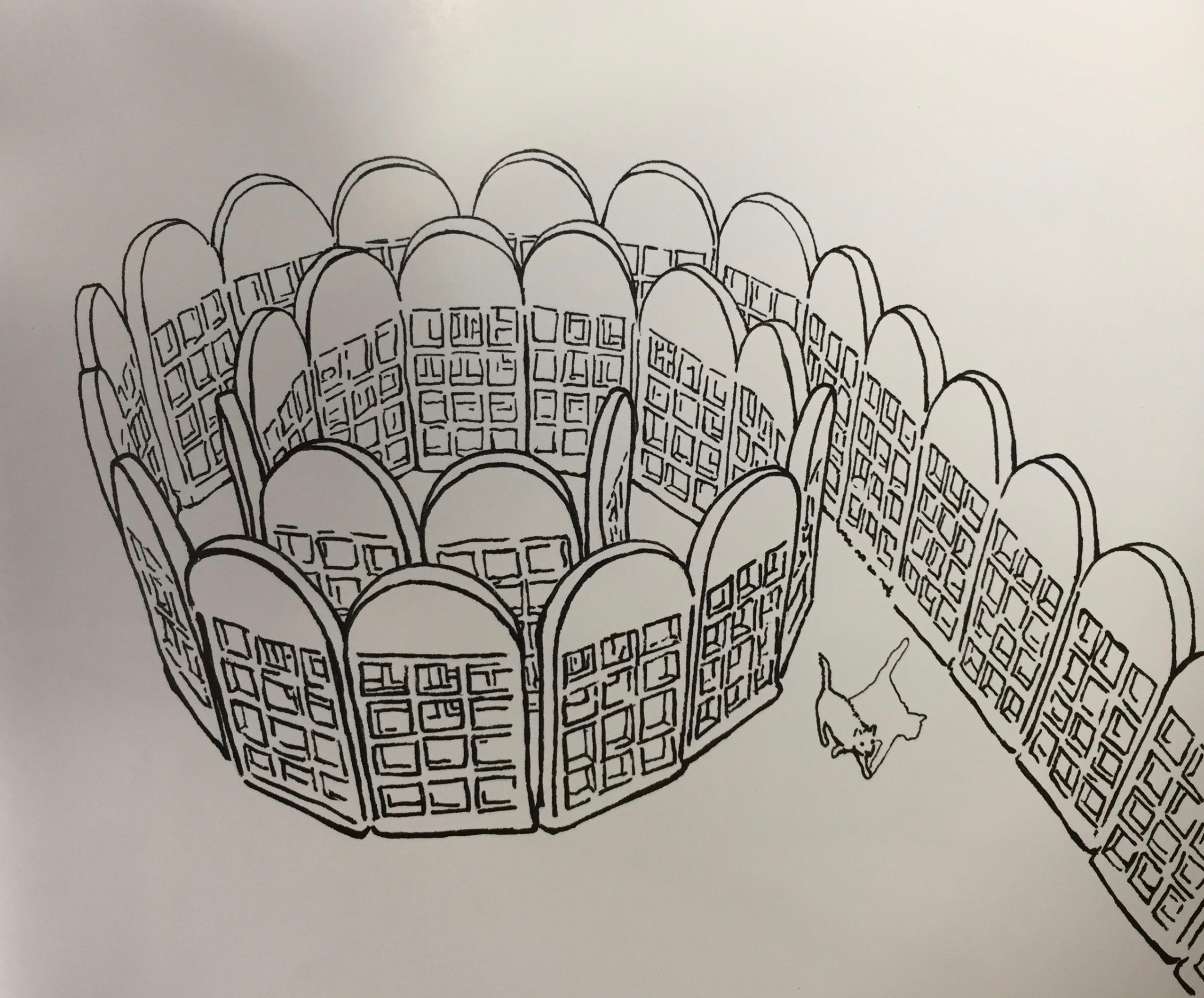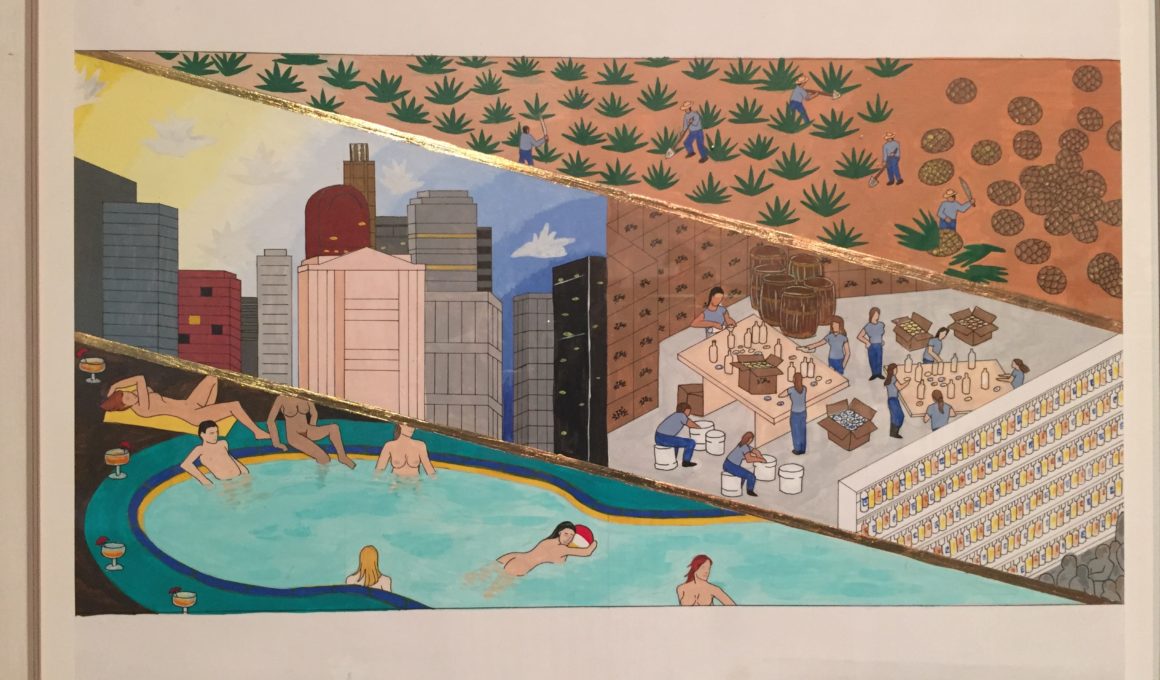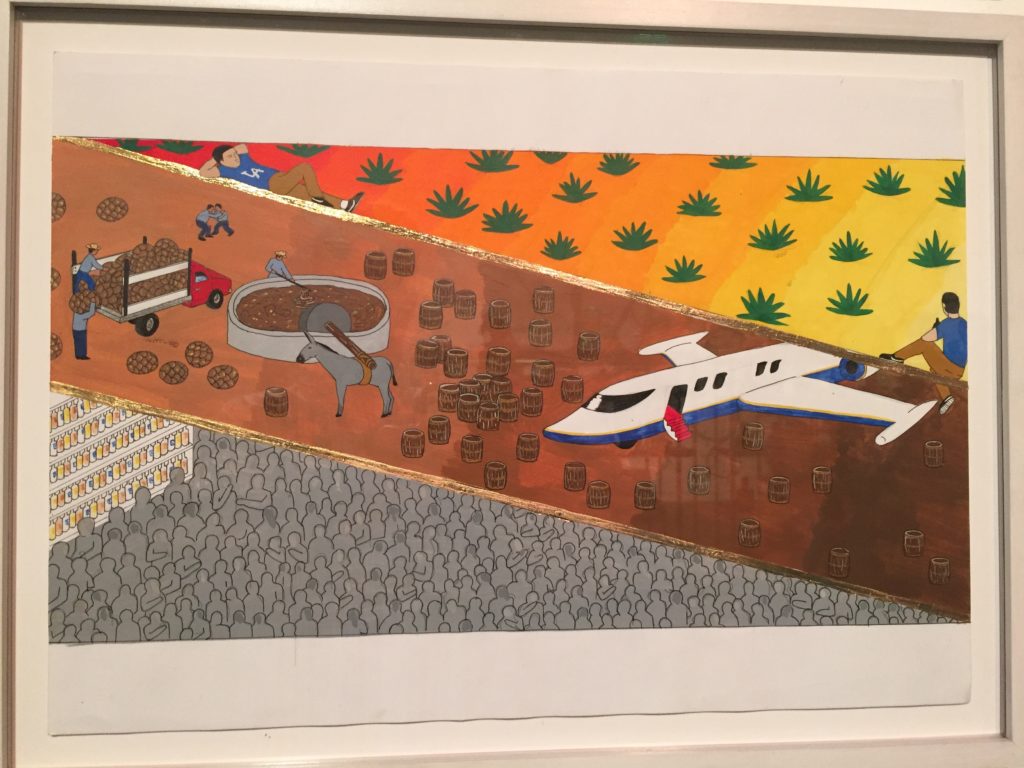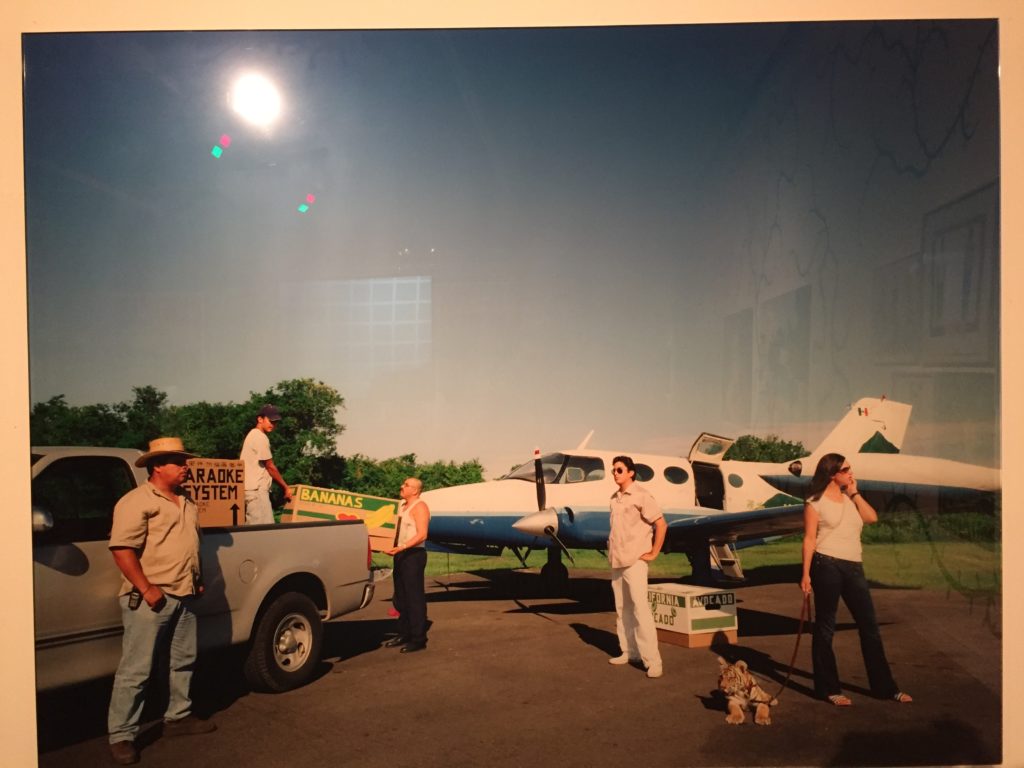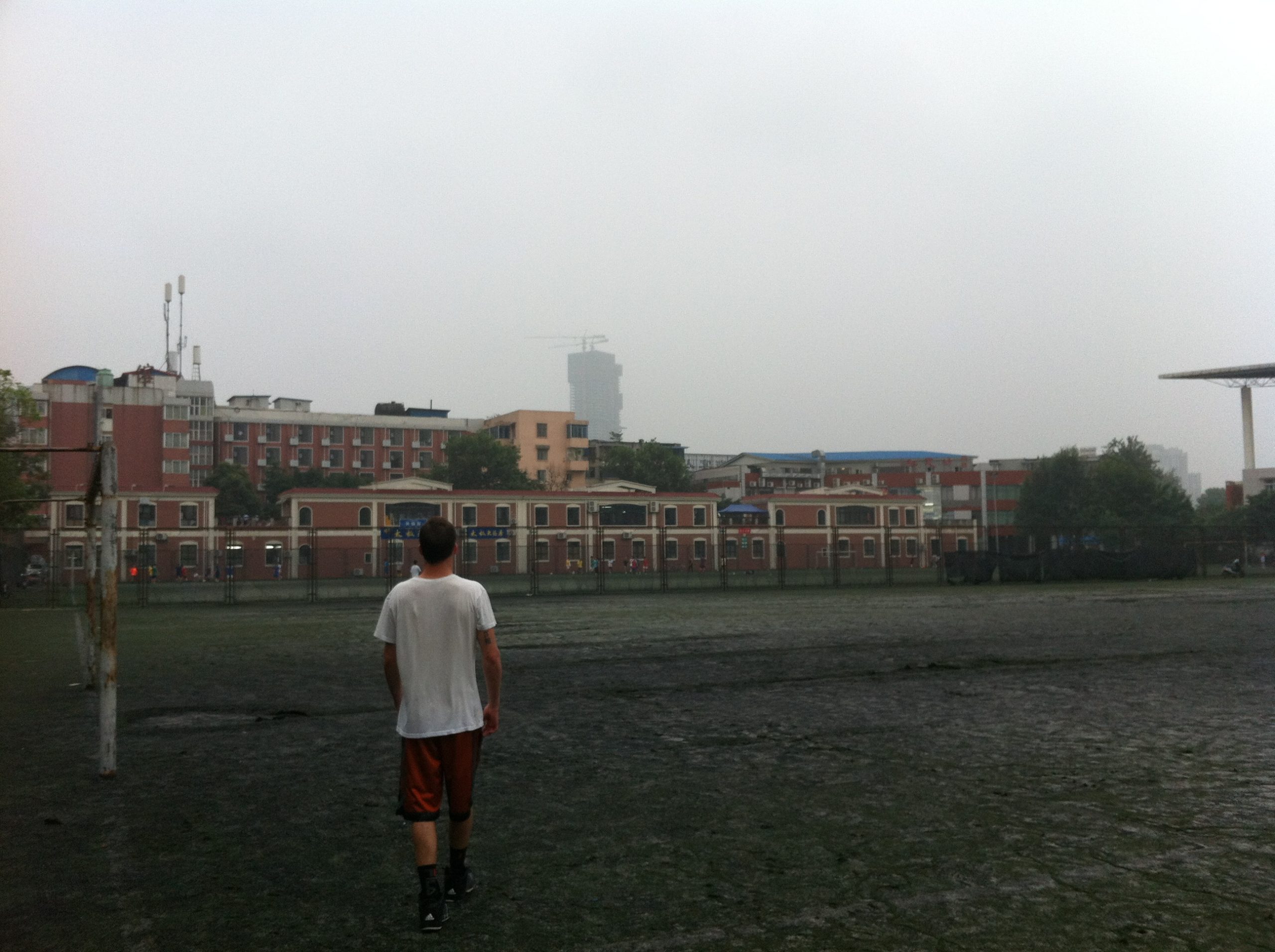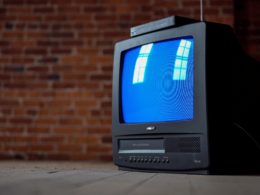Eduardo Sarabia identifies spatially with Los Angeles, Guadalajara, and Berlin. Sarabia grounds his show Drifting on a Dream through a reckoning with place. That reckoning begins with consideration of The Mistake Room, which hosts Drifting on a Dream and is tucked into an industrial hive directly south of Los Angeles. The Mistake Room is situated at a junction. Rows of warehouses hibernate as train tracks, relics of industry, cut through the tidy industrial grids at angels so obtuse they highlight the epochal mash-up undergirding this neighborhood particularly and Southern California generally.
Sarabia’s work seems born of a mind accustomed to answering the question: “where are you from?” and The Mistake Room also seems to have been pressed by similar lines of inquiry. Questions of origin force responders to reckon with identity as manifest through the intersection of self-identification and physical location. While I use the term ‘intersection,’ Sarabia prefers another: “the exhibition explores the many ways people dream in the in-between; between past and future; between necessity and morality; and between fiction and reality” (from The Mistake Room’s press release on Eduardo Sarabia: Drifting on a Dream). Sarabia interrogates the “in-between” as: “an artist whose practice embodies the tensions and possibilities that come with living between nations.” Intersecting places are physically and psychically scrawled on the personal histories of migrants like Sarabia. Drifting on a Dream interrogates the complicated implications of intersected people through metaphor.
One investigation of intersection in Sarabia’s exhibition deploys tequila as the central metaphor. In the two paintings featured above, the creation of tequila is juxtaposed against its consumption through the use of a wall. The wall, not to be ignored, is granted an intersectionality of its own as it is ‘inhabited’ by further juxtapositions. The wall is a physical object perched upon by Angelinos who are displaced. In the context of the above paintings this means being pulled out of ‘real’ spacial context and painted so as to be riding the wall/intersection.
The ‘places’ on either side of the wall are ungrounded, lacking definitive markers of specificity. Within the ethos of the paintings, the only location markers are an LA Dodgers shirt in one painting and the skyline in the other. The wall(s) can be read as a gash, a slice through the heart of the paintings that creates a physical barrier between physical spaces. The gashes conjure Freud as they slice through the paintings, signifying the lack of a grounded space. In the painting with the man in the LA Dodgers shirt sitting on the wall, his leg dangles over the edge, blocked by the gold that registers as the top of the wall. Just below the gold border, the man’s foot is visible.
Two details in these paintings exist in multiple ‘realities’ at once: the man, whose foot dangles in one world while his body rests in another, and the tequila that is being created, shipped, and consumed in different sections of the painting. Sarabia’s ‘walls’ lack the physical characteristics of walls, for they are transparent and contain within their borders the movement of goods and culture that render the walls meaningless (or at least permeable). Activities occur separately on each side of the wall, but on further investigation the iconography inside the wall represents the convergence of two distinct physical spaces. The ‘places’ inside the walls represent convergence in one painting through the mash-up of a city skyline, a packaging plant, and a bar while in the second painting the plane feels anachronistic next to the wooden barrels and traditional packaging that will presumably be loaded onto the plane, thereby generating a temporal convergence. The convergence within the walls is further emphasized when the two paintings are viewed next to each other. The wall of the first image becomes the foreground of the second, while the background of the first image becomes the central wall of the second image. The wall as boundary and void becomes unbounded space as the gaze moves from one painting to the next. Boundary/intersection becomes center. The walls are intersection and void simultaneously; they are meaning and lack, signifier and signified. “Where are you from?” begins as an innocuous question that quickly becomes intersection and void as it smashes into “where were you born?” which in turn smashes into “where do you live?” and suddenly “where did you grow up?” is buried alongside the steel train tracks.
Sarabia’s intersections continue, vary, and branch out in new directions through metaphors like the revitalization of the “Pacific Discovery Group of the Americas” which proposes a treasure hut for Pancho Villa’s lost gold that would be backed by (presumably foreign) investment. As American conversations on walls and immigration bear down on its citizens, Sarabia’s show offers a chance to reflect on walls and migration in fresh ways that offer productive ruptures from rote lines of question and answer that numb populations to their own individuality and connectivity.


